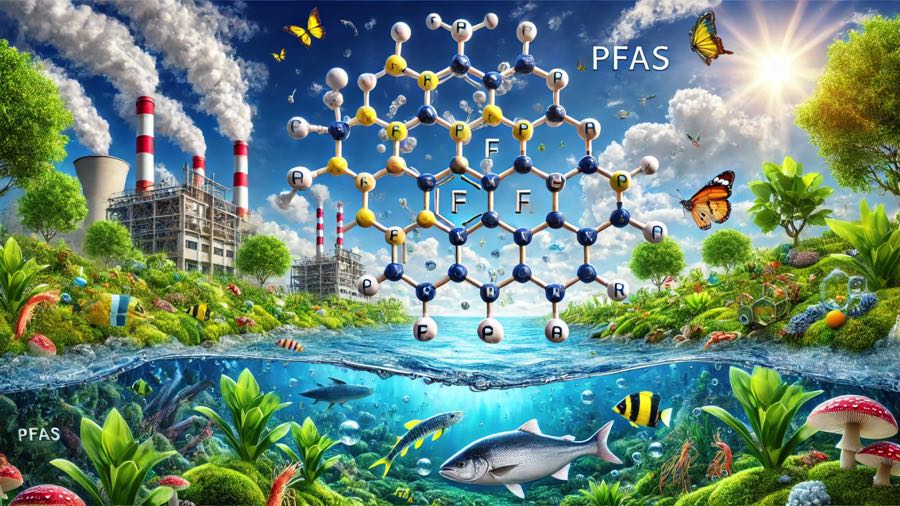
共同研究
元東京大学大学院薬学系研究科 関水和久先生との共同研究
Nature Chemical Biology 11,127-133 (2015) doi:10.1038/nchembio.1710
Artucle Lysocin E is a new antibiotic that targets menaquinone in the bacterial membrane
Abstract To obtain therapeutically effective new antibiotics, we first searched for bacterial culture supernatants with antimicrobial activity in vitro and then performed a secondary screening using the silkworm infection model. Through further purification of the in vivo activity, we obtained a compound with a previously uncharacterized structure and named it 'lysocin E'. Lysocin E interacted with menaquinone in the bacterial membrane to achieve its potent bactericidal activity, a mode of action distinct from that of any other known antibiotic, indicating that lysocin E comprises a new class of antibiotic. This is to our knowledge the first report of a direct interaction between a small chemical compound and menaquinone that leads to bacterial killing. Furthermore, lysocin E decreased the mortality of infected mice. To our knowledge, lysocin E is the first compound identified and purified by quantitative measurement of therapeutic effects in an invertebrate infection model that exhibits robust in vivoeffects in mammals.
秋田大学医学部附属病院 薬剤部 三浦昌朋教授との共同研究
Oncotarget, 2018, Vol. 9, (No. 38), pp: 25277-25284 Review Clinical implications of pharmacokinetics of sunitinib malate and N-desethylsunitinibplasmaconcentrationsfor treatment outcome inmetastatic renal cell carcinoma patients.
Abstract:In this study, we examined the association between the pharmacokinetics (PK)level of sunitinib malate (SU) and its metabolite N-desethyl-sunitinib (DSU) in terms of adverse events (AEs) and clinical outcomes in patients with metastatic renal cell carcinoma (mRCC). The PK of sunitinib (SU and DSU) was examined in 26 patients (20 men and 6 women) with mRCC. The associations between SU/DSU C0 and AE occurrence, best response rate, time to treatment failure, progression-free survival (PFS), and overall survival (OS) were investigated. Occurrence of grade 1 or higher hand-foot syndrome and thrombocytopenia (p = 0.002 and 0.024, respectively) was associated with a high concentration before morning intake (C0) level of SU. Low C0 levels of DSU were significantly associated with drug discontinuation due to disease progression (p = 0.035). Patients with DSU C0 level higher than 15.0 ng/mL showed a tendency toward increased PFS (61 weeks vs 12 weeks, p = 0.004) and OS (36 months vs 8 months, p = 0.040). The C0 level of SU and SU + DSU were not associated with prognosis. The higher level of C0 of SU may predict developing AEs and DSU C0 >15.0 ng/mL may lead to better prognosis of patients treated with sunitinib. PK of sunitinib may be useful for determining adequate dosages and prevention of severe AEs. Further studies are required to establish the utility of the PK of sunitinib in patients with mRCC.
秋田大学医学部附属病院 薬剤部 三浦昌朋教授との共同研究Drug Metabolism and Pharmacokinetics 31(2016)12-20
Review Routine therapeutic drug monitoring of tyrosine kinase inhibitors by HPLC-UV or LC-MS/MS methods.
Abstract:Analytical methods using high performance liquid chromatography coupled to ultraviolet detection (HPLCeUV) or liquid chromatographyetandem mass spectrometry (LCeMS/MS) have been reported for the quantification of oral tyrosine kinase inhibitors (TKIs) such as imatinib, nilotinib, and dasatinib in biological fluids. An LCeMS/MS method can simultaneously assay multiple TKIs and their metabolites with high sensitivity and selectivity for low plasma concentrations less than 1 ng/mL. For quantification of imatinib, nilotinib, and dasatinib, a limit of quantification (LOQ) of less than 10 ng/mL, 10 ng/mL, and 0.1 ng/mL, respectively, in the clinical setting is necessary. Because simpler and more cost-efficient methodology is desired for clinical analysis, plasma concentrations of imatinib and nilotinib (target trough concentrations of 1000 ng/mL and 800 ng/mL, respectively) could be assayed by an HPLCeUV method after comparison with results obtained from the standard LCeMS/MS method. However, in the quantification of dasatinib, the LCeMS/MS method that has high sensitivity and selectivity and is free from interference by endogenous impurities is superior to the HPLCeUV method. Highly precise analytical methods are needed for individualized treatment via dose adjustment of oral anticancer drugs, in particular those with low target plasma concentrations less than 10 ng/mL. Copyright © 2015, The Japanese Society for the Study of Xenobiotics. Published by Elsevier Ltd. All rights reserved.
PFAS(食品・飲料水・土壌など)
 |
|
||||
CW&MW(飲料水)
CW&MW (飲料水・ミネラルウォーター残留農薬検査)
CWは、水質管理目標設定全項目をパッケージ化しています。
MWは、ミネラルウォーターの残留農薬基準が設定されている全項目をパッケージ化しています。
マシスだけのオリジナルサービス。REGISTER(登録農薬)
 |
|
||||
FOODS(残留基準値設定農薬)
 |
|
||||
GGAP/JGAP(GAP対応)
 |
|
||||
IFM(農薬モニタリング)
 |
|
||||
FPp(農薬低価格Ver.)
 |
|
||||
VD(動物用医薬品モニタリング)
 |
|
||||
FPv(動物用医薬品低価格Ver.)
 |
|
||||
PetFood(ペットフード)
 |
|
||||
Feed(飼料)
 |
|
||||
Soil(土壌)
 |
|
||||
栄養成分・他▶
基礎栄養成分 食品添加 食物繊維 脂質 金属・イオン アミノ酸 ビタミン 核酸 有機酸 脂肪酸 アルコール 染料・色素 細菌
機能性成分・他▶
薬物・生薬▶
毒・有害物質▶
環境関連▶
各種分析機器測定▶
Web見積り依頼▶ |
|
分析検査依頼書▶ |
|
放射能検査依頼書▶ |
|
検査依頼書▶ |
|
|
|
ご依頼までのフロー▶ |
|
ご案内▶ |
ニュース 採用情報 会社概要 社屋の概要 会社沿革 プレリリース 共同研究 社会貢献 アクセス ご利用条件 プライバシーポリシー |
FQA▶ |
Q&A ポジティブリスト制 分析結果証明書 検体(試験品)の必要量 報告方法と分析期間・お値引き・キャンセル 証明書の読み方 分析方法 データの取扱 フローチャート(残留農薬)分析に関する知識 分析用語 ワンポイントアドバイス 精度管理 国際認定(IS0/IEC 17025:2017) 情報リンク |
|
|
認証及び登録▶ |
ISO/IEC 17025:2017認定試験所(認定番号:74760) 計量証明事業(青森県第73号濃度) 日本GAP協会推奨機関(残留農薬) 向精薬試験研究施設設置者登録(青森県第15号) |
所属学会/協会▶ |
日本分析化学会 日本食品衛生学会 日本血液学会 日本健康・栄養食品協会 日本GAP協会 |
|
|
Mailお問合せ▶ |
|
電話お問合せ▶ |
0172-29-1777 |
2025 Copyright MASIS All Right Reserved.